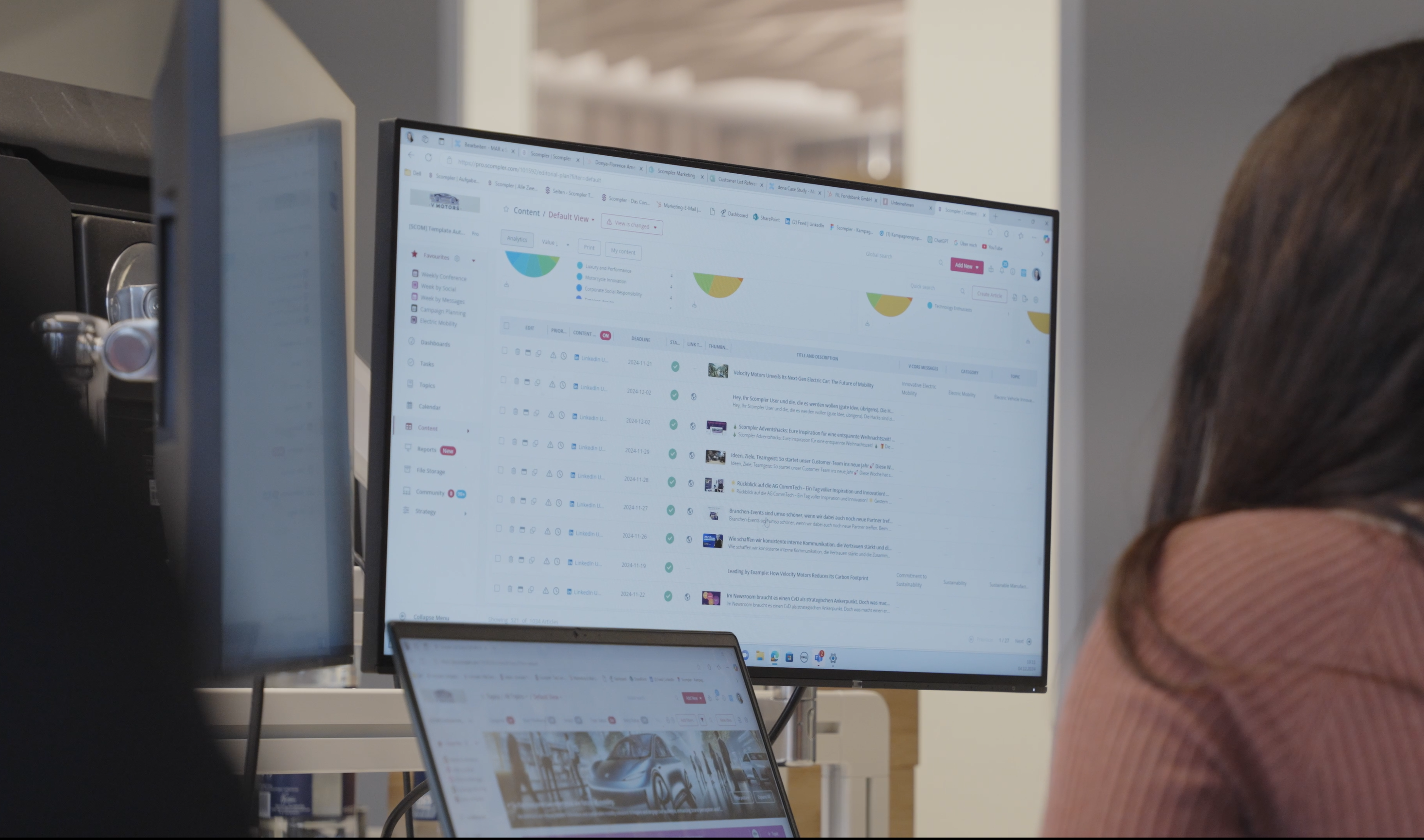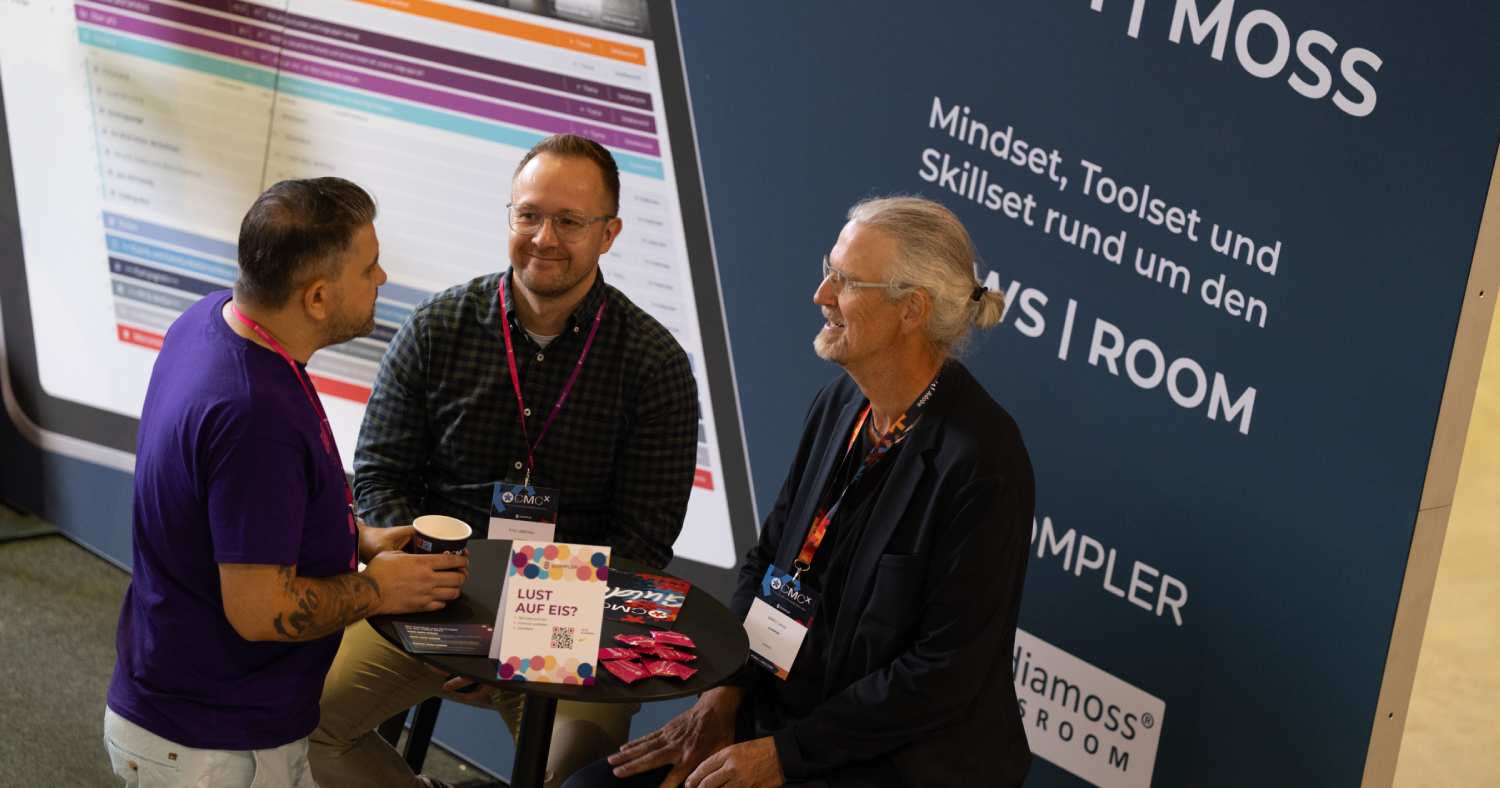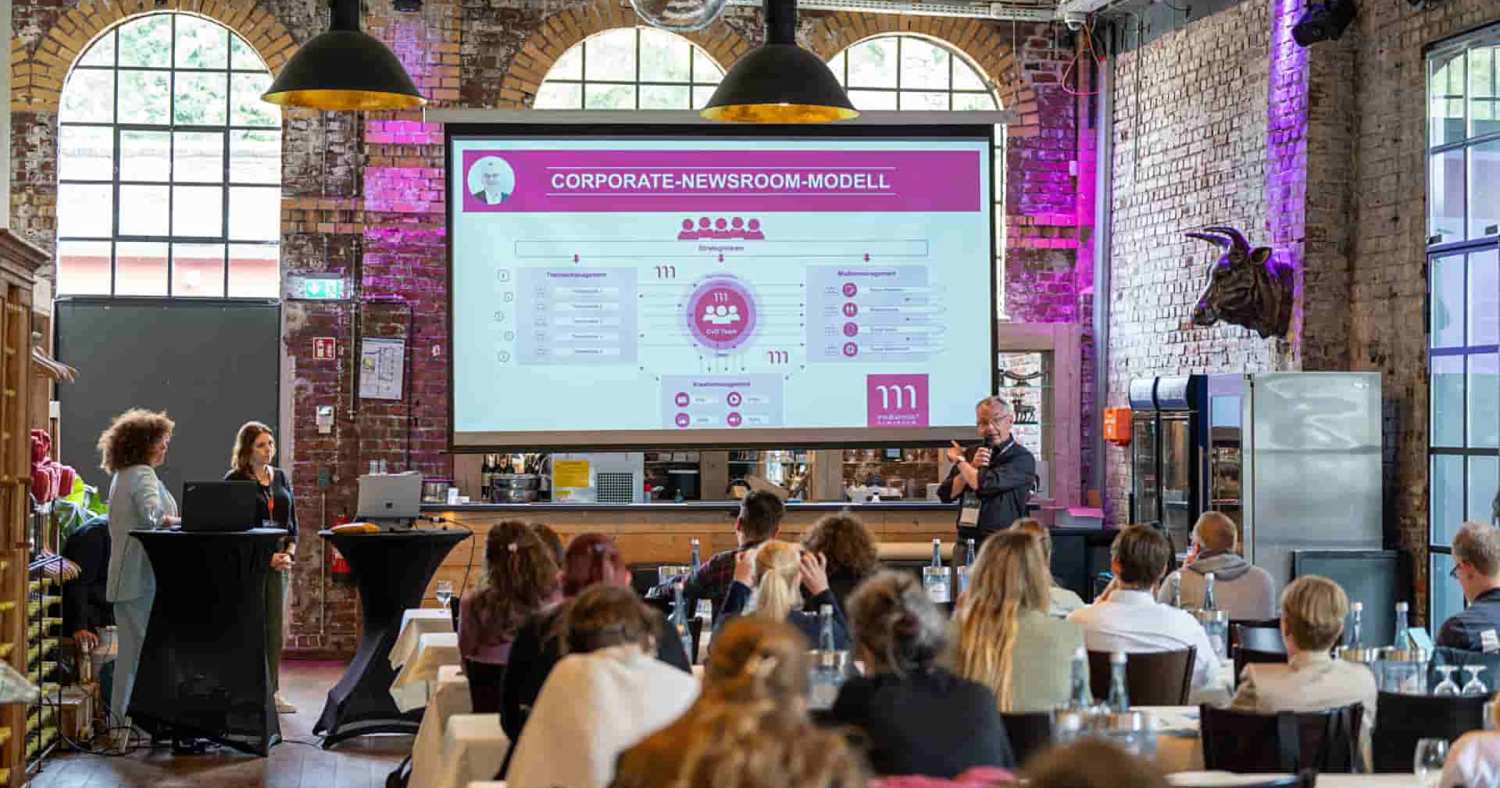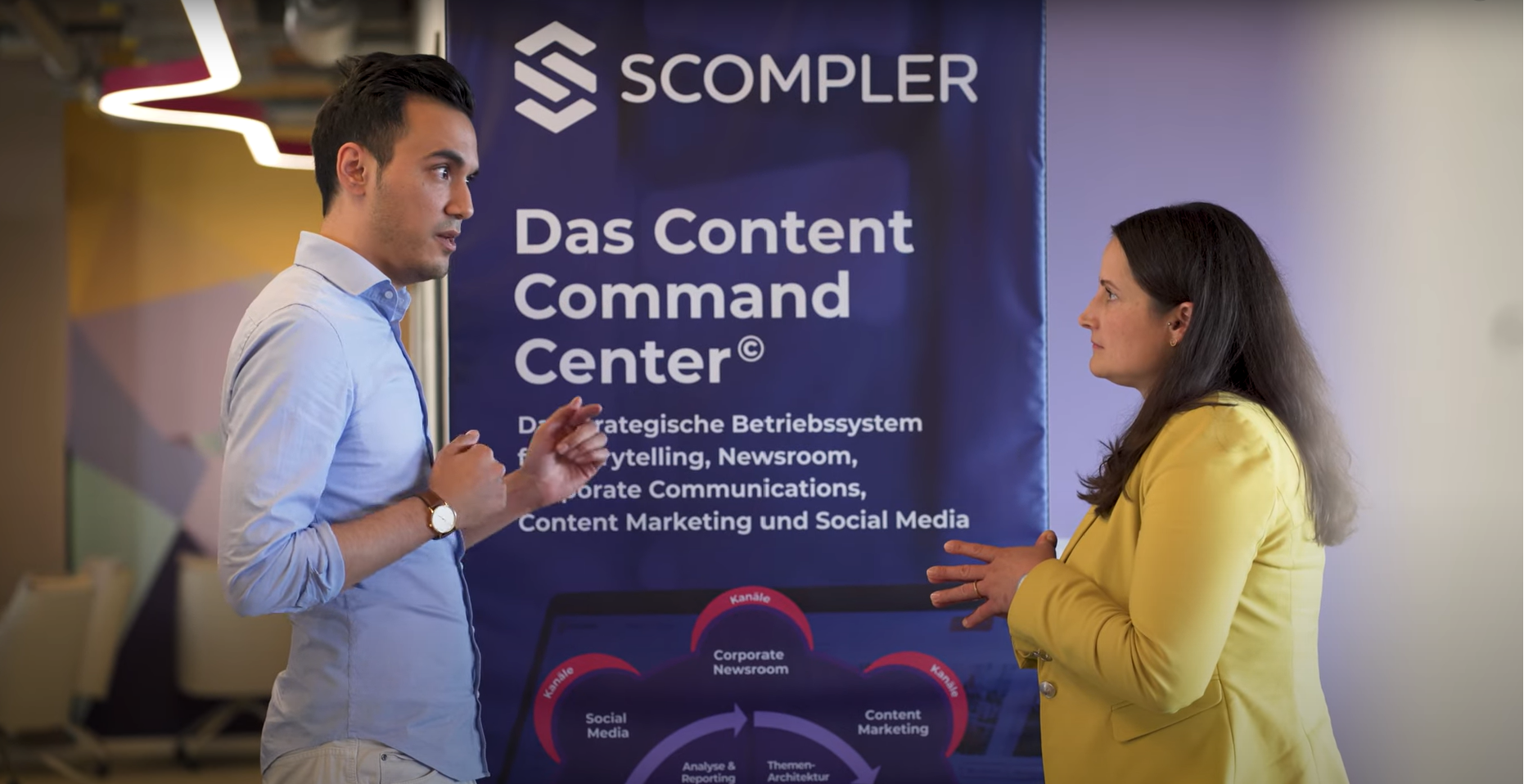Videos are among the most attention-grabbing formats in corporate communication and marketing communication. No other medium combines emotion, information and activation so directly. And yet many corporate videos fall short of their potential - because they are not embedded in an overarching strategy.
To ensure that videos are not simply measured by impressions and clicks, but that the meaning and purpose behind them is also visible, they must be managed in a targeted manner - as part of strategic communication planning. Embedded in a company's communication and topic strategy, high-quality and emotionally charged videos can be a real asset - possibly more powerful than any other.
1. position topics with videos in the long term - not just selectively
Instead of producing videos selectively, the aim is to strategically develop topics over longer periods of time. Companies should ask themselves: What do we want to stand for? What messages do we want to anchor continuously? And how can the video format support us in bringing our messaging to our target groups?
A video alone is not enough for this - but as part of a clearly defined topic architecture, it can be an effective amplifier. This creates consistency of content, better strategic control and, integrated into this, a prioritization of which video topics we focus on in the company.
2. plan content along these themes - not channel- or format-driven
Many video projects start with the question: "We need more videos for Instagram - what can we do?" But that's the wrong place to start. Instead, the question should be: "Which topic do we want to implement and how for which target group - and which format fits?"
A video is an integrated component of an overarching content strategy. This means that a video tells a story embedded in a topic, complements other formats (e.g. press releases, blog posts, infographics, podcasts or intranet contributions) and is planned and played out along campaigns, topic specials or editorial plans. This creates consistent storytelling across channels and formats - and video is transformed from "silo content" into a strategically managed amplifier.

3. define strategic goals and KPIs
A video without a goal is just a more or less successful contribution. To be effective, it needs clear objectives:
- In which phase of the customer journey is it most effective?
- What is it supposed to achieve?
- Who should it appeal to?
Whether brand awareness, activation or knowledge transfer - every objective needs its own suitable KPIs: Watch time, engagement rate, conversions, qualitative feedback, thought leader engagement. This is the only way to systematically measure and optimize the impact of your videos.
4. plan and produce videos in an integrated manner - with clear responsibilities
A strategy can only become visible in everyday life if its implementation is also structured. This is why video projects must be planned in an integrated manner - with clearly defined responsibilities, deadlines and approval processes.
As a central platform for content planning, Scompler makes exactly that possible:
- Responsibilities, briefings, deadlines and approvals are transparent and traceable
- Status, milestones and publication dates are visible in the editorial calendar
- Videos are planned on an equal footing with other formats such as website texts, press releases or social media posts
- Content recycling can be planned by structuring according to topics, channels and target types - and video content can serve as the basis for follow-up formats
5. regularly reflect on performance and impact
Once a video has been published, it is not a finished project - it should be the start of impact measurement and KPI analysis in order to continuously optimize content planning based on the results. What worked well or badly? How was the video perceived - also in the context of overall communication on a topic?
The impact of a video should not be analyzed in isolation, but in the context of the overall topic strategy:
- Did it contribute to achieving the goal?
- What lessons can be learned for future videos or other formats on this topic?
- How can the video be reused or expanded with other content?
Conclusion: Plan videos strategically - instead of just output
Videos only develop their full effect if they are strategically planned, thematically embedded and systematically controlled. They are not isolated individual measures, but valuable components of an overarching communication and content strategy. If you think about video content in a goal-oriented way, plan with clear responsibilities and focus, you will not only gain in efficiency - but also in relevance and impact.






